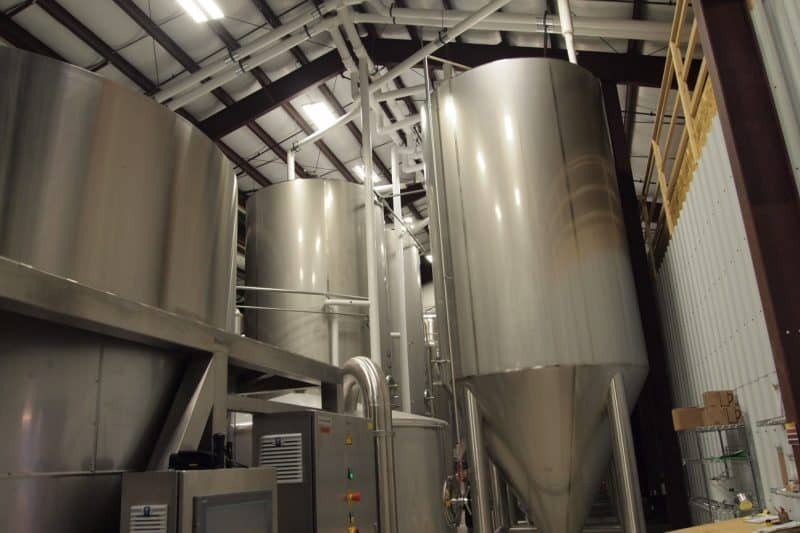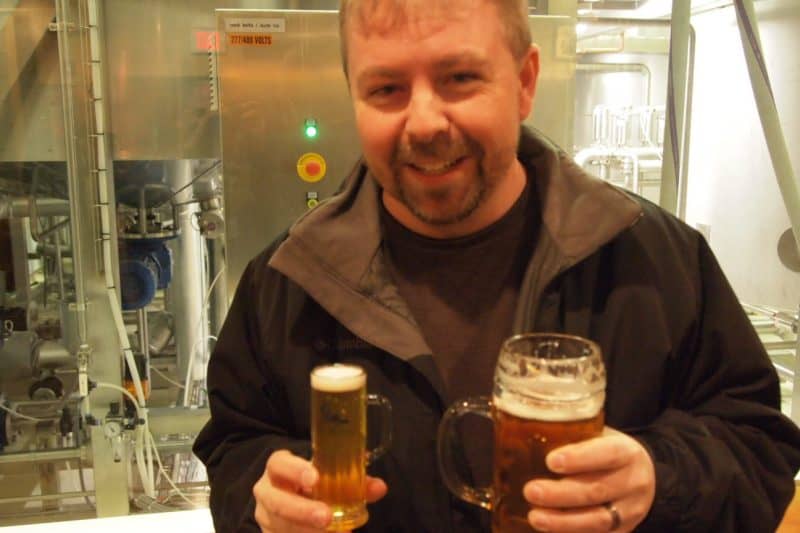Fort Hill Brewing: A 50-Barrel System with Hops Growing Next Door

Fort Hill Brewery’s big grain silos loom before you out of farm fields driving up Fort Hill Road, off Ferry Street in Easthampton. The footprint is huge, with the towers and a new steel building that looks like a medium sized factory.
This new Easthampton brewery is by far the largest in this town that now has three breweries, with a 50-barrel brewing system. Abandoned Building Brewing, the other newcomer in town, has a 15-barrel system and High and Mighty Brewing is building their own brewery in town right now.

Eric Berzini, the 28-year-old brewmaster, showed us around and explained why Fort Hill’s 10 owners decided to build such a large operation. It’s because they are brewing lager beers, which take 6-8 weeks to brew, versus the ales more commonly made that take about 11 days. “We had to make a whole lot more per batch because it takes so much longer to make lager,” he explained.

On Thursday, Friday and Saturdays, the brewery is open for visitors to taste the beers in their comfy bar area, with a pool table and the absolutely cutest little tiny draft mugs you’ve ever seen. Tastings are free and pints are only $4. They are all lager beers, ranging from 4.75 to 7.25 alcohol, and my personal favorite was the M4, a smooth lager that was refreshing and not hoppy. IPA fans, like my cousin Steve, won’t be happy here. Lagers rule.
Eric took us on a tour of the operation and showed us their very high tech systems for bringing in the grain and keeping all of the various temperatures correct. The number of giant tanks used in the processes dwarfed any local brewery I’ve ever seen. There is also a massive gas-powered furnace to make hot water. This is what a 50-barrel system looks like, and the cost $4.5 million prompted Berzini to quip, ‘yeah that’s what it all cost–so buy a growler–seriously!”
Berzini learned his brewing craft at the tiny Bridgewater Corner Brewing and the larger Long Trail brewing in Vermont.
Besides their size, Fort Hill Brewery has another unique element to it. They grow hops right outside the brewery! Though it takes up to three years for the hops plants to produce the right kinds of buds, they are on their way to being nearly self-sufficient in an ingredient that they’ll need a whole lot of, hops.
As we toured the automated canning line, Berzini pointed out that they color code each pull-tab for the different style of beer, but use the same white generic can for everything. “The company that makes cans has a 100,000 minimum per design, so we are using the same can for all of the beers,” he said.
